
views
Removing Stubborn Stains with a Poultice
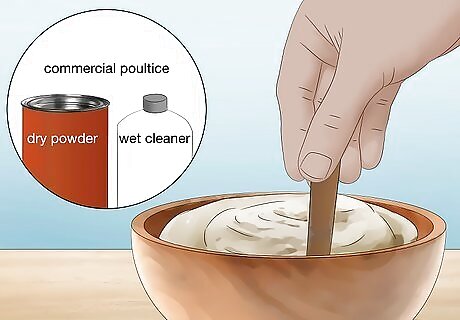
Mix a commercial poultice into a thick paste. Commercial poultices contain a dry powder and a liquid cleaner that help absorb the stain out from your limestone. Follow the directions on the packaging for combining the ingredients. When you’re finished mixing, your poultice should have a similar consistency to peanut butter or frosting. You can buy a commercial poultice from any hardware or home improvement store.
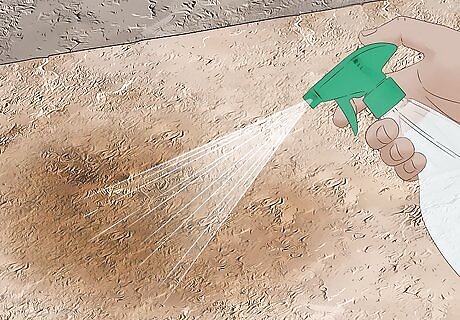
Wet the stain with distilled water. Use a rag or spray bottle to spread your distilled water over the stain. This helps the poultice make better contact with the stain so it lifts easier. If you don’t have distilled water, you can use the same liquid cleaner that came with the poultice.
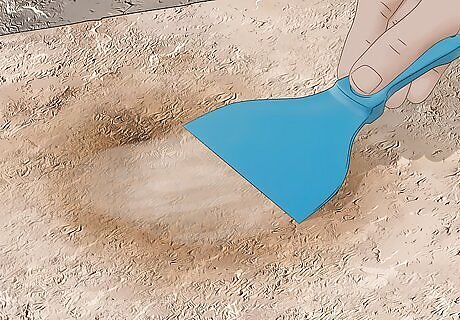
Apply the poultice on top of the stain. Use a wooden or plastic spatula to spread the poultice over the stain. Keep the poultice about ⁄4 inch (0.64 cm) thick and extend it 1 inch (2.5 cm) past the edge of the stain.
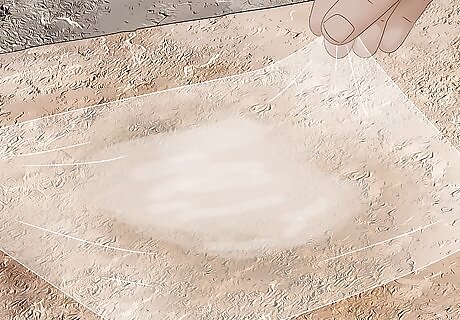
Cover the poultice with plastic wrap. Poultices work best the longer that they stay moist. Cut off a piece of plastic wrap that’s large enough to completely cover the poultice. Press the edges down firmly against the limestone and tape them down to seal the poultice inside.
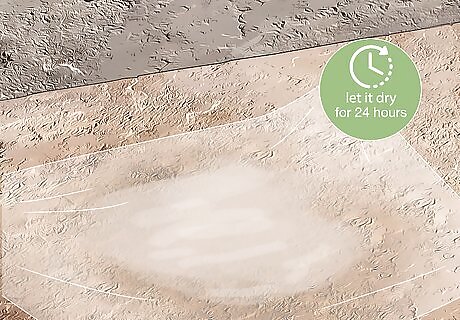
Let the poultice dry for at least 24 hours. Your poultice will slowly break down the stain and draw it out of your stone, but it takes about a day. Leave the poultice to dry completely before removing the plastic wrap. It may take up to 48 hours for your poultice to completely dry.
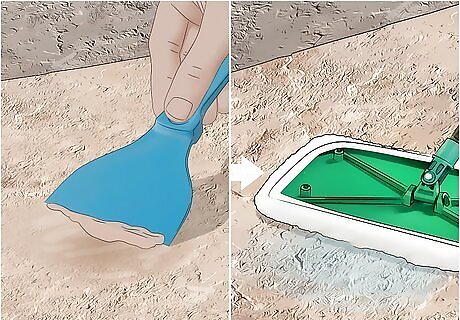
Scrape and rinse the poultice off of your limestone. Use a plastic spatula so there’s less risk of scratching your limestone. Slowly break the poultice off of the stone with your spatula. Rinse any residue off with a rag dampened with distilled water. Once you remove the entire poultice, dry the area with a clean soft cloth.
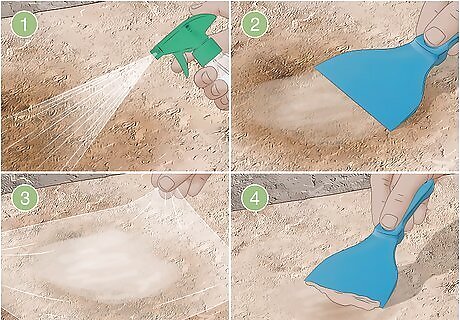
Apply another poultice if you still see the stain. While poultices work to remove most surface stains, you might still notice some discoloration from stubborn stains. Mix another poultice and apply it directly to your limestone again. Wait another couple of days before scraping and rinsing the poultice off to check if the stain is still there. If poultices don’t remove the stain, contact a professional stone cleaner to try and clean it.
Cleaning the Limestone Surface
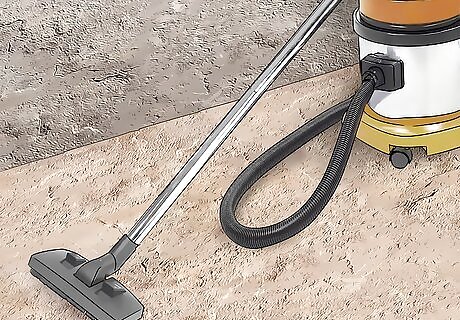
Vacuum the limestone. Your vacuum can be utilized to care for your limestone, especially if you can turn off the spinning brush. If you can’t turn off the brush, you can still do a quick vacuum of the dust and dirt of the affected area. The vacuum removes and dislodges dirt and dust in between cracks of the limestone. If you have a limestone table or other surface that isn’t flooring, use a handheld vacuum if available. Some vacuums come equipped with an attachment hose. This will also work for an elevated surface like a kitchen counter.
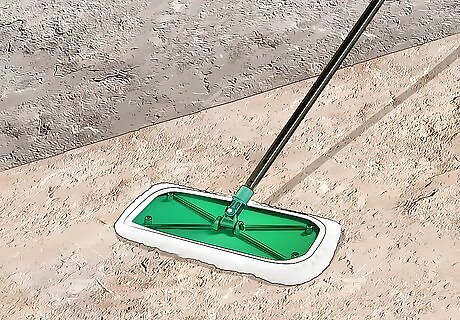
Use a dry mop or broom. After removing or dislodging some of the grime off the floors, mop the area. Do not wet your mop, but instead use it dry to sweep the area of unwanted dust or dirt. You can also use a broom for this. There are several “dust mops” available that would work efficiently for the limestone.

Wet the area with a damp rag. It’s important to remove any dirt particles before using liquids because they can scratch the surface. Fill a bucket of warm water and add a couple tablespoons (14 mL) of mild soap. You can use common hand soap or use a smaller proportion of dish soap. Dampen a rag by submerging it into the mixture and remove as much water as you can. Gently wipe down the area with the rag. Take your time and don’t hesitate to spend extra time going over the stain with the rag. Soak the rag as many times as you need to.
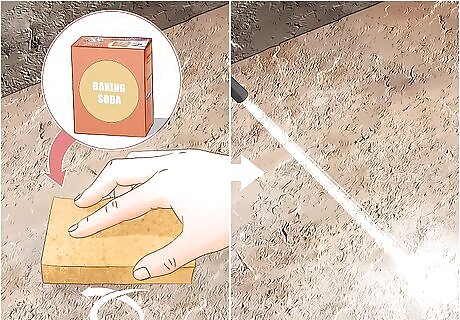
Clean soap scum on limestone showers with baking soda. Soap scum buildup can be gently scrubbed off by using baking soda on a sponge in a circular motion. Then rinse with water. Non-acidic soap scum removers or a stone cleanser can also be used if necessary. Dry your shower after each use to prevent soap scum buildup.
Caring for Your Limestone
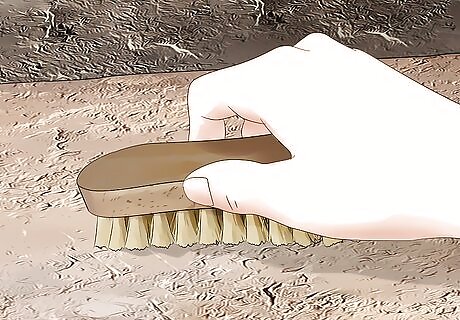
Clean spills immediately. Rub off stains immediately either with a damp cloth and gentle soap or brush off (if it's soot, dirt, etc.). Some stains can be removed using a bristle brush, especially when they're new. The sooner the item is attended to, the better. If not, proceed with deeper cleaning techniques.
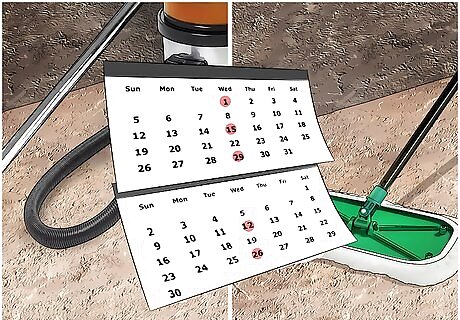
Do a regular cleaning. Every two weeks, you should dry mop your limestone floors. If you have limestone countertops, you should also clean them with a dust absorbent fabric every other week. There are plenty of cleaning supplies that specialize in efficient, dry cleaning. You could use a dust mop on a table or countertop as long as the mop is clean.
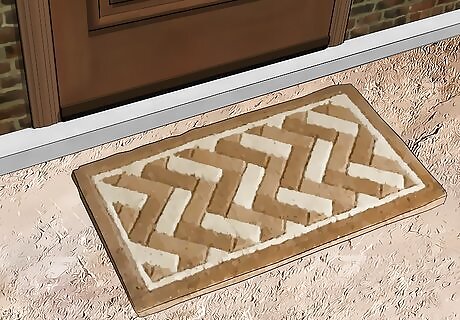
Use doormats and runners. For areas around the house that get heavy foot traffic, use rugs, mats, or runners. Consider spots near doorways or hallways leading to a door. Most stains occur from dirt and mud tracked onto the floor. You should also have outdoor mats to wipe your feet off before entering your house.
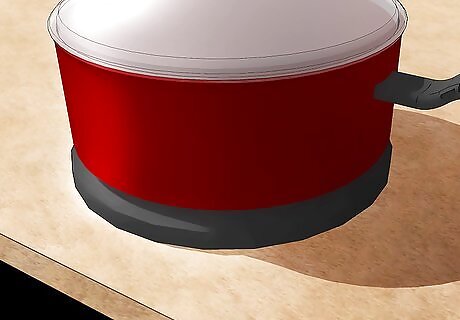
Use coasters and pads. For the limestone table and countertop users, use coasters! Limestone is susceptible to ring stains and watermarks. Prevent any damage by having plenty of coasters available for you or your guests. Place hot cooking supplies on protective mats. Similar to the condensation cups, the heat produced off hot plates can stain and damage your surfaces too.



















Comments
0 comment